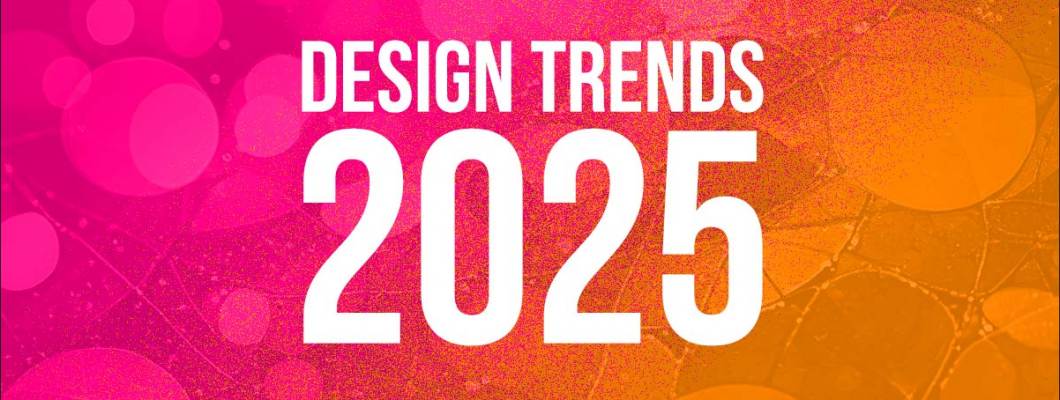
As we step into 2025, minimalism in design is being reimagined for a more complex digital age. No longer limited to stark white spaces and bare-bones layouts, this new wave known as "Minimalism Reloaded" balances simplicity with purpose, clarity with personality, and aesthetics with usability. Designers are moving beyond the old “less is more” mindset to focus on creating intuitive, human-centric experiences that cut through the noise of today’s highly animated, interactive digital world.
This evolved approach to minimalism highlights what truly matters: clear communication, seamless functionality, and emotional connection. By eliminating visual clutter and focusing on essential elements, brands can build trust and foster deeper user engagement. From bold typography and sustainable color palettes to ethical design choices and immersive white space, minimalism in 2025 is all about meaningful impact without unnecessary extras.
As consumers seek digital calm and designers strive for authenticity, minimalism reloaded offers a powerful framework. It ensures designs remain timeless, accessible, and responsive across devices and platforms. Whether you're working on web, mobile, or brand identity, embracing this refined minimalism will help you deliver experiences that are not only beautiful but also purposeful and enduring.
Let’s explore the key minimalist design trends that will define the year ahead.
1. Neo-Minimalism: Clean Meets Bold
Gone are the days of purely white interfaces and ultra-flat visuals. In 2025, minimalism blends simplicity with character. Designers are introducing high-contrast palettes, bold typography, and asymmetrical layouts, all while maintaining a streamlined visual hierarchy.
Think clean UI with expressive fonts. Simple product pages that make use of oversized buttons. Interfaces where color becomes a focal point, not an afterthought. Neo-minimalism isn’t cold or sterile; it’s clean, modern, and visually impactful.
2. Purpose-Driven Design and Ethical Minimalism
Today’s users are increasingly conscious of the brands they engage with. In response, 2025’s minimalist design emphasizes purpose and transparency.
Expect layouts that prioritize accessibility, clarity of language, and eco-conscious visuals. Designers are focusing on content that educates and empowers, paired with sustainable aesthetics, limited animations, darker themes to save energy, and thoughtful visual choices that reduce digital overload.
This ethical form of minimalism aligns with slow design principles and user well-being. It creates trust, not just engagement.
3. Immersive White Space
White space, often undervalued, is making a strong comeback as a functional design tool. But in 2025, it’s more than just “empty” space. It’s immersive, purposeful, and interactive.
Designers are using negative space to guide users’ attention, enhance readability, and create a sense of digital calm. Whether it's framing a call-to-action or providing breathing room for text and imagery, white space is being used strategically to create balance and flow.
4. Minimalist Micro-Interactions
Subtle animations and transitions are taking center stage in minimalist interfaces. Micro-interactions like hover states, soft button effects, and contextual feedback enhance user experience without visual noise.
These micro-interactions in 2025 aren’t flashy. They’re frictionless. Their purpose is to improve usability, not distract from it. They guide users, confirm actions, and make digital products feel intuitive and refined.
5. Sustainable Color Palettes
Minimalist design in 2025 reflects growing environmental awareness. Designers are opting for earthy tones, muted neutrals, and sustainable palettes inspired by nature.
You’ll see a rise in beige, olive, charcoal, and clay tones, soft, warm hues that support visual calmness and eco-conscious messaging. Combined with bold accents like indigo or rust, these palettes add personality without overwhelming the user.
6. Typography as the Hero
Minimalist typography in 2025 is expressive, editorial, and functional. Designers are using oversized, high-contrast typefaces to make bold statements while still keeping layouts clean.
Monospaced fonts, geometric sans-serifs, and sharp serifs are all trending. When used strategically, type becomes the design, replacing heavy graphics and telling the story through words alone.
7. Zero Distraction Interfaces
Apps and websites are evolving to offer "focus modes" or distraction-free environments. Inspired by productivity tools like Notion or Obsidian, interfaces in 2025 aim to reduce visual clutter and cognitive load.
Think toggled content, hidden navigation, collapsible elements, and streamlined user flows that help users get from point A to B effortlessly.
This user-first approach to minimalism supports better digital well-being and stronger brand loyalty.
8. Dark Minimalism
Dark mode is no longer just an option; it’s a design direction. In 2025, minimalist dark themes are trending for both aesthetics and functionality.
Dark interfaces with muted neon or pastel highlights create contrast and sophistication, while reducing eye strain and power consumption. It’s sleek, modern, and aligned with futuristic branding.
9. Modular & Scalable Layouts
With the rise of design systems, minimalism in 2025 is modular. UI components are built to scale across devices and platforms with consistent spacing, size, and visual logic.
Designers are leveraging grid-based systems, repeatable patterns, and reusable elements to maintain a clean, cohesive experience, whether on mobile, desktop, or wearable tech.
10. AI-Assisted Minimalism
AI design tools are enabling designers to automate redundant tasks and focus on refinement. In 2025, AI helps optimize minimal layouts, suggest accessible color contrast, or auto-generate responsive components.
This frees creatives to focus on storytelling and strategy, further aligning minimalism with intention and innovation.
Why It Matters
Minimalism reloaded isn’t about aesthetic minimalism alone. It’s about refining experiences to be more human, accessible, and sustainable. By stripping away excess and focusing on purpose, brands and creators can craft designs that are more memorable, functional, and meaningful.
As digital experiences evolve, one thing is clear: clarity is power. And in 2025, minimalism will remain a powerful tool for building trust, enhancing usability, and standing out in a noisy world.
Conclusion
Minimalist design in 2025 is intelligent, intentional, and intuitive. It embraces technology, user empathy, and aesthetics that endure. Whether you're a UI/UX designer, brand strategist, or creative leader, adopting the next wave of minimalism will help you deliver experiences that resonate and last.
Ready to reload your design approach? Strip away the noise. Focus on the essentials. And let your design speak with quiet confidence.

Leave a Comment